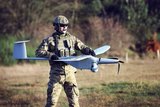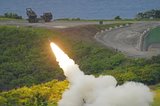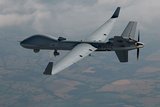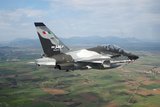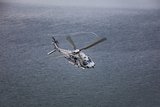Fourth Triton UAS delivery for US Navy sees completion of first operational orbit
Delivery of the fourth Triton to the navy completes the aircraft's first operational orbit. (Photo: Northrop Grumman)
Northrop Grumman has delivered the fourth multi-intelligence MQ-4C Triton to the USN ahead of initial operational capability (IOC) this year.
This delivery completes the set of aircraft for Unmanned Patrol Squadron (VUP) 19’s establishment of the first operational orbit, while a second orbit is preparing for delivery in the summer. With three orbits planned around the world, the Triton will provide 24/7 maritime awareness.
In its multi-intelligence configuration, IFC-4, the MQ-4C features a 360-degree AESA maritime radar, full-motion EO/IR video streaming, and an upgraded ZLA-1(v2) ELINT sensor and new SIGINT sensor based on those used on the crewed Lockheed Martin EP-3E.
Related Articles
Japan Maritime Self-Defence Force begins trials with MQ-9B SeaGuardian UAS
US Navy anti-sub exercise puts crewed-uncrewed teaming to the test
Northrop Grumman achieves design milestone for US Pacific missile tracking
Shephard Defence Insight notes that following procurement of 14 MQ-4Cs before 2021, Naval Air Systems Command awarded Northrop Grumman a $98.9 million contract modification for one additional Lot Five MQ-4C. This avoided a two-year production gap from FY2021 to 2023 that had been foreshadowed by the USN's FY2021 Budget estimate.
However, the USN's FY 2022 Budget estimate stated that a one-year production gap would still occur in FY2022 before the resumption of production in FY2023.
On 22 June 2022, the DoD announced that Northrop had been awarded a $248.23 million contract modification for two additional low-rate initial production (LRIP) Lot 5 MQ-4Cs. Therefore, 17 units have been contracted to date for $3.172 billion.
Defence Insight believes that these 17 contracted MQ-4Cs are, according to the 2022 Director, Operational Test & Evaluation ) Strategy document, designed to deliver SIGINT capability sufficient to cover the role of the retiring EP-3E Aries II aircraft.
The USN's FY2022 & FY2023 Budget estimate does not provide any post-FY2022 details for the programme. However, to meet its target of 65 units, the USN needs to procure an additional 37 units for $6.448 billion.
Based on the USN's FY2022 budget request, MQ-4C's flyaway unit cost is $141.80 million.
Related Programmes in Defence Insight
MQ-4 Triton (Announced/Contracted) [USA]
Related Equipment in Defence Insight
More from Air Warfare
-
![Portugal signals interest in establishing A-29N final assembly line]()
Portugal signals interest in establishing A-29N final assembly line
As the launch customer for the NATO-configured variant, Portugal also took delivery of the first five A-29N aircraft from its order for 12, placed in 2024.
-
![Podcast: Critical Care episode 5 - Sustaining Europe’s frontline from Heidelberg]()
Podcast: Critical Care episode 5 - Sustaining Europe’s frontline from Heidelberg
As Europe ramps up defence investment in the wake of the Ukraine crisis, the spotlight is turning to how nations sustain their growing fleets.
-
![Leonardo signs contract on Austria’s M-346 aircraft order]()
Leonardo signs contract on Austria’s M-346 aircraft order
The first of the 12 M-346 aircraft are expected to be delivered to the Austrian Air Force by 2028, according to the company.
-
![German Navy in “ramp-up” phase as it welcomes first NH90 Sea Tiger delivery]()
German Navy in “ramp-up” phase as it welcomes first NH90 Sea Tiger delivery
With all 31 aircraft set to be delivered by 2030, the helicopters will gradually replace the ageing Sea Lynx fleet which are due to be retired in 2026.







